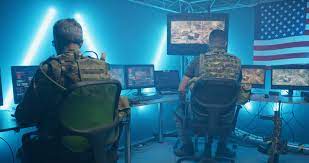
The U.S. Army has unveiled its latest cross-functional team, dedicated to addressing the complex challenges of contested logistics on the modern battlefield. With an eye on future adversaries, such as China, and the harsh realities of war in places like the Indo-Pacific, this team is tasked with revolutionizing how the Army sustains its forces, reducing logistical demands, improving supply distribution, and providing efficient power solutions.
The need for such a team became abundantly clear with Russia’s invasion of Ukraine, highlighting the risks associated with uncontested sustainment and logistics. The U.S. Army is taking proactive steps to adapt its logistical approach for future conflicts.
Last year, the Army published its Multi-Domain Operations doctrine, which included a dedicated annex addressing contested logistics. Army Secretary Christine Wormuth assigned the Army Materiel Command to lead efforts in redefining how troops can be deployed with weapons and equipment when they cannot expect to move freely on the battlefield.
The team’s four primary lines of effort focus on data utilization, demand reduction, supply distribution, and advanced power solutions.
- Looking to Data: The Army aims to track battlefield equipment usage precisely, enabling better estimates of equipment, spare parts, munitions, fuel, and battery requirements. Predictive analysis tools and data-driven decision-making have become paramount in addressing this challenge.
- Demand Reduction: The Army seeks to reduce the logistical tail’s weight, exploring hybrid energy technology, alternative fuels, and technologies to make vehicles more efficient. Hybrid vehicles save fuel and provide a tactical advantage by running sensors and systems with the engine off.
- Special Delivery: Improving supply distribution to the battlefield is another crucial area. The Army is keen on autonomous resupply capability, exploring various options, from manned-unmanned teaming to semi-autonomous ground, air, and water-based platforms.
- Charged Up: The Army is investing in advanced power solutions, including rechargeable batteries and alternative power sources. The goal is to standardize battery types and eliminate the need for gas-filled generators in the field.
The Contested Logistics Cross-Functional Team will be fully operational shortly, commencing the process of assessing technologies that can sustain troops in remote and challenging locations. This effort includes exploring autonomous resupply, predictive logistics, alternative fuel sources, and battery technologies.
Gen. James Rainey, Army Future Command Chief, stressed the importance of autonomous and robotic resupply, indicating that the team will leverage cutting-edge technology on land, at sea, and in the air. He emphasized the team’s role in supporting watercraft plans for the Indo-Pacific region, a critical aspect of the U.S. military’s future strategy.
As the U.S. Army continues to adapt to a changing battlefield and the challenges posed by potential adversaries, the Contested Logistics Cross-Functional Team is expected to play a vital role in shaping the military’s future approach to logistics in contested environments.
